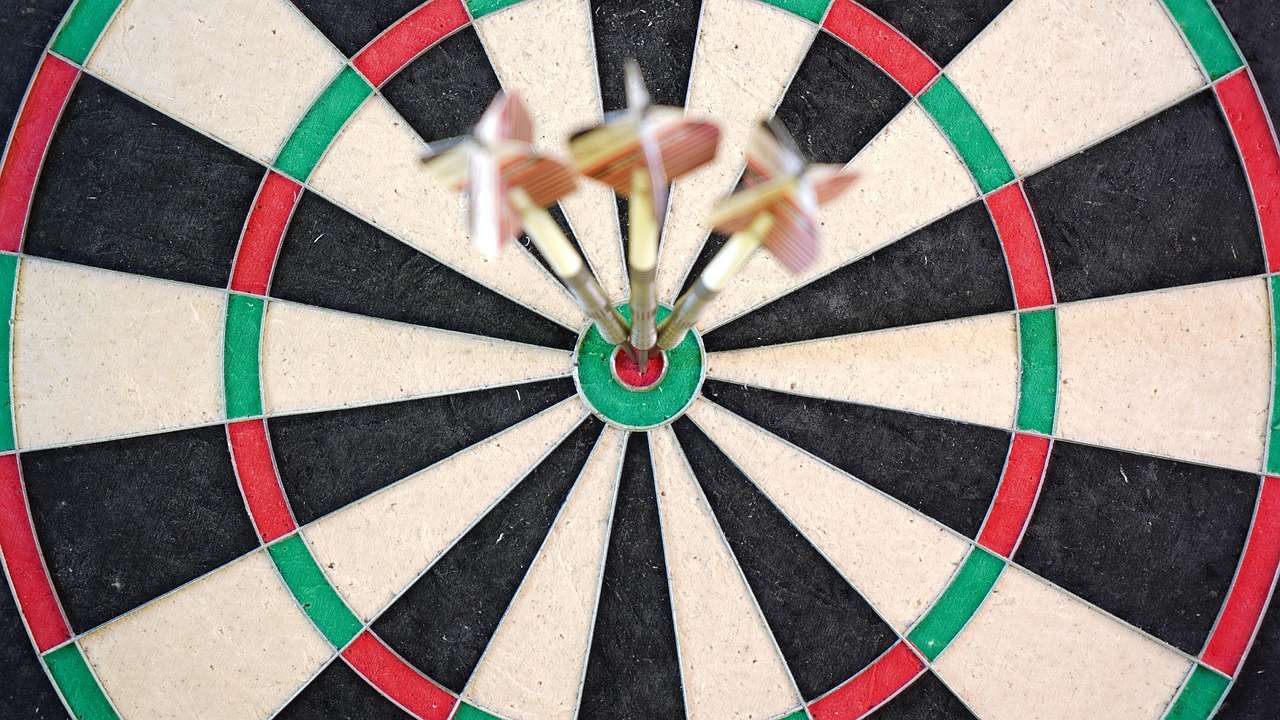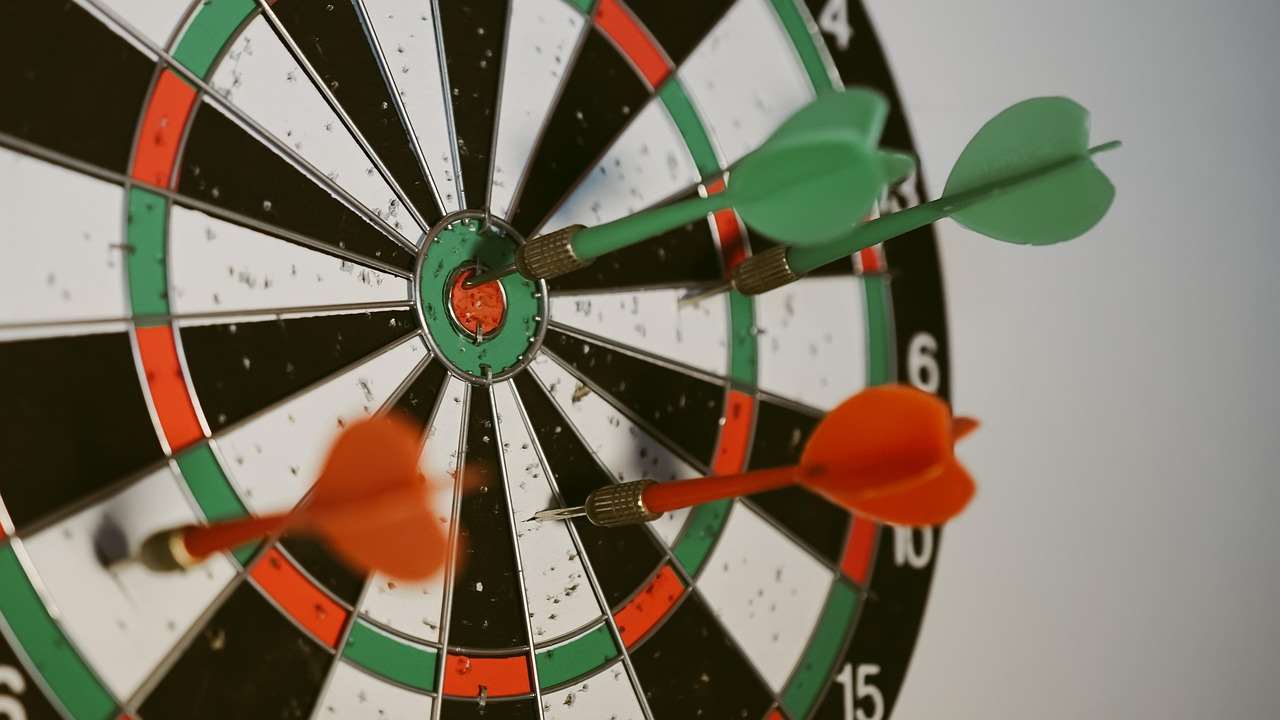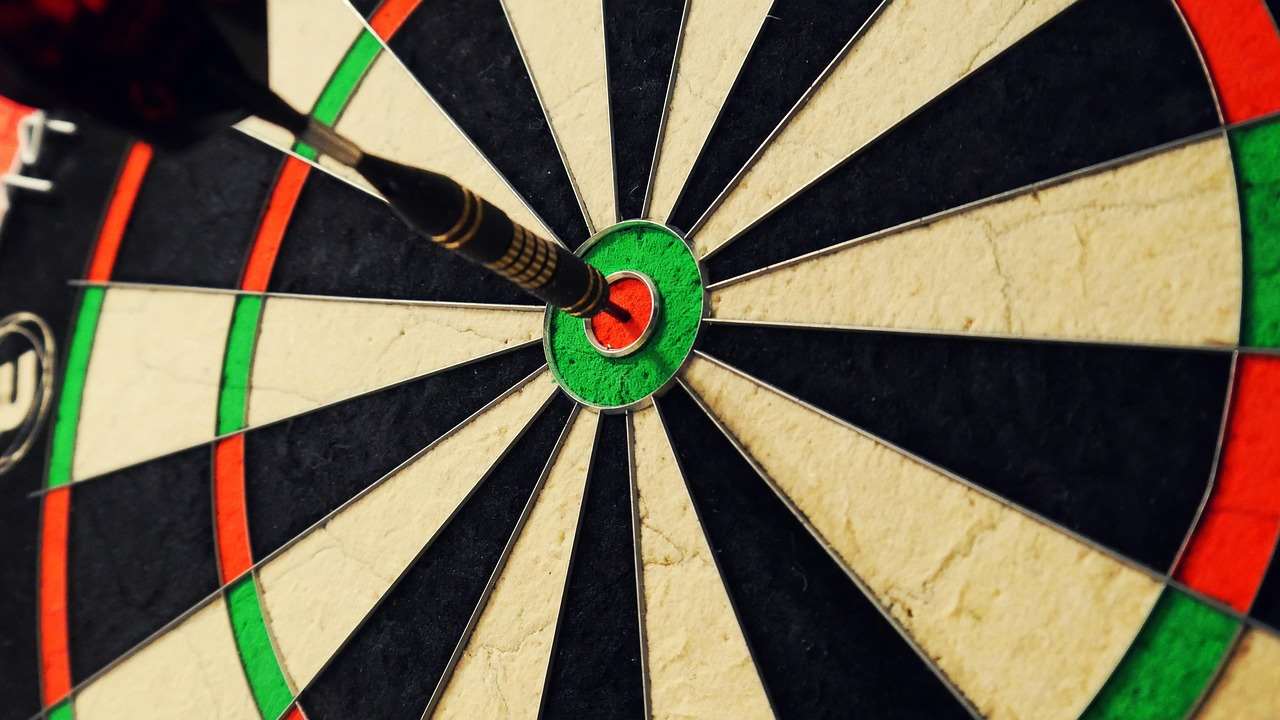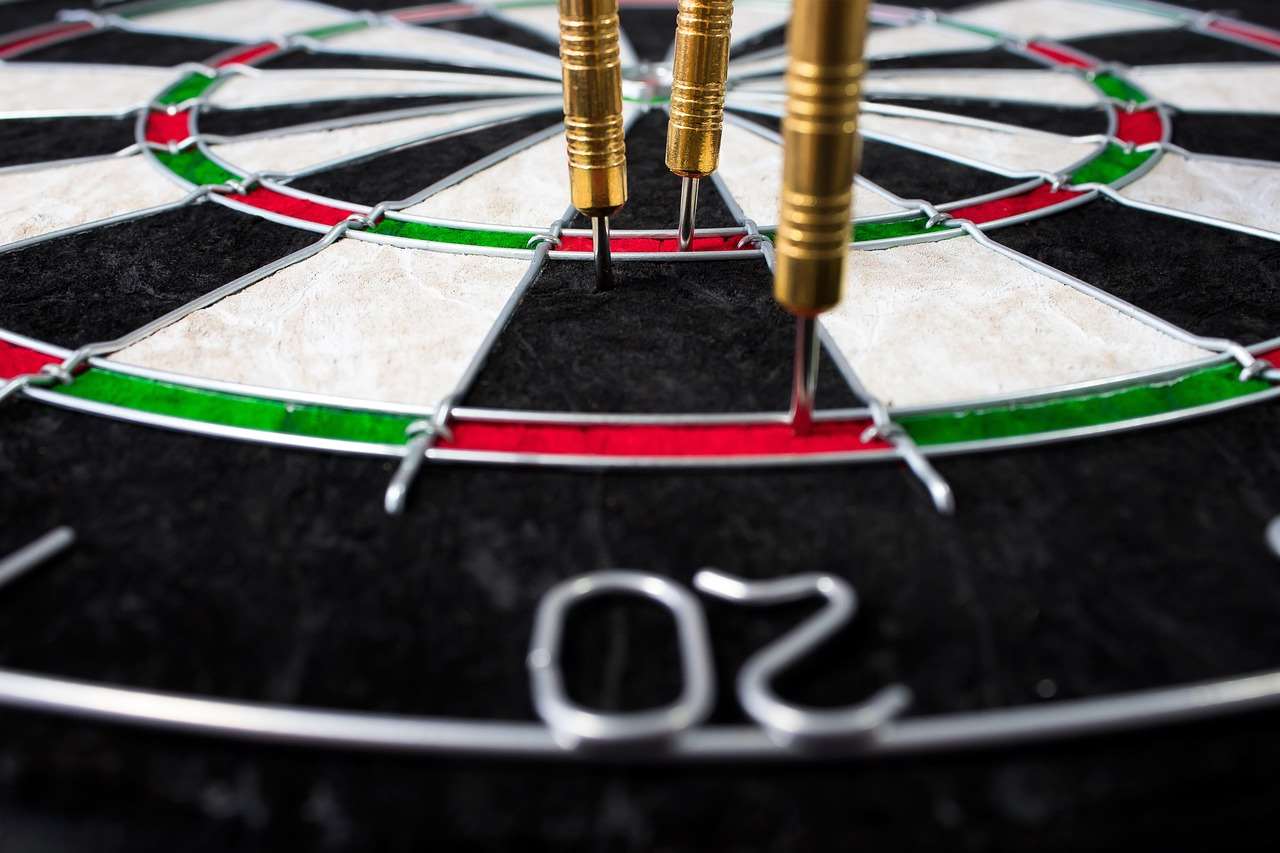Short barrel darts offer a unique feel and trajectory favored by many players, particularly those who grip closer to the point. This article will explore the benefits, drawbacks, and considerations when choosing short barrel darts, along with tips for improving your game with them.
⚠️ Still Using Pen & Paper (or a Chalkboard)?! ⚠️
Step into the future! The Dart Counter App handles all the scoring, suggests checkouts, and tracks your stats automatically. It's easier than you think!
Try the Smart Dart Counter App FREE!Ready for an upgrade? Click above!
Understanding the Appeal of Short Barrel Darts
So, why do some dart players gravitate towards short barrel darts? The answer lies in their design and how it affects your throw. Dart barrel length influences the dart’s center of gravity, which in turn impacts its stability in flight. Shorter barrels generally shift the center of gravity forward, allowing for a more direct and controlled throw, especially for those who grip the dart closer to the front.
The compact nature of these darts can also be advantageous in crowded dartboards. If you often find your darts hitting each other, creating deflections, the smaller profile of short barrel darts can minimize this issue.

Benefits of Using Short Barrel Darts
Here’s a breakdown of the key advantages you might experience when switching to short barrel darts:
- Enhanced Control: The forward center of gravity provides a feeling of greater control, particularly during release. This can lead to more consistent throws.
- Reduced Deflections: Their smaller size reduces the likelihood of bounce-outs caused by collisions with other darts already in the board.
- Comfortable Grip: Players who prefer a front-weighted dart often find the grip and balance of short barrel darts more natural and comfortable.
- Faster Release: The reduced length can facilitate a quicker, more compact throwing motion.
Potential Drawbacks to Consider
While short barrel darts offer numerous advantages, they’re not without their potential drawbacks:
- Steeper Trajectory: The forward weight distribution can result in a slightly steeper flight path, requiring adjustments to your aiming point.
- Reduced Stability for Some: Players accustomed to longer barrels might initially find short barrel darts feel less stable, particularly if they don’t grip the dart near the front.
- Not Ideal for Rear Grippers: Those who grip the dart further back might not experience the full benefits of a front-weighted dart and may find them unwieldy.
It’s crucial to experiment and see if short barrel darts align with your throwing style and grip preference.
Choosing the Right Weight and Material for Your Short Barrel Darts
Once you’ve decided to try short barrel darts, you’ll need to consider weight and material. The ideal weight is subjective, but most players use darts between 22 and 26 grams. Lighter darts may require a smoother throwing motion, while heavier darts offer more stability, darts jaxa . Material-wise, tungsten is generally preferred for its high density, allowing for slimmer barrels and better grouping. Brass darts are a more affordable option but tend to be bulkier. Consider purchasing a darts case to safely transport your new set of darts.

Grip Techniques for Short Barrel Darts
The grip is paramount when using short barrel darts. As mentioned earlier, a front-focused grip is generally recommended to maximize the benefits of the forward weight distribution. Experiment with different finger placements and pressure until you find a grip that feels natural and provides consistent control. Try to maintain a relaxed grip, as excessive tension can negatively impact your throw. Consider purchasing a darts flights set to customize your dart’s flight characteristics.
Key Grip Considerations:
- Front-Weighted Grip: Position your fingers closer to the point of the dart.
- Relaxed Hand: Avoid squeezing the dart too tightly.
- Consistent Pressure: Apply even pressure across your fingers for a smooth release.
Fine-Tuning Your Throw with Short Barrel Darts
Switching to short barrel darts may necessitate adjustments to your throwing technique. Pay close attention to your stance, arm motion, and release point. A slightly steeper trajectory might require you to aim a bit lower on the dartboard. Practice consistently to develop muscle memory and refine your technique. Remember, consistency is key in darts. Thinking about darts finish card can also assist in strategic gameplay.
Adjusting Your Stance and Aim
Your stance plays a significant role in your accuracy. A stable and balanced stance will provide a solid foundation for your throw. Experiment with different foot positions to find what feels most comfortable and allows you to maintain your balance throughout your throwing motion. Adjust your aim based on the dart’s trajectory, aiming slightly lower if necessary.

Practicing Effectively with Short Barrel Darts
Effective practice is essential for mastering any type of dart. Focus on specific areas of your game, such as accuracy, consistency, and scoring. Set realistic goals and track your progress to stay motivated. Incorporate drills to improve your weak areas. Regular practice will build muscle memory and enhance your overall performance.
Practice Drills:
- Target Practice: Focus on hitting specific numbers on the dartboard.
- Checkout Practice: Practice finishing specific combinations.
- Accuracy Drills: Aim for the bullseye repeatedly to improve your precision.
Mobile dart scorer is a useful tool to use when trying out new darts (https://dartcounterapp.com/)
Comparing Short Barrel Darts to Other Dart Styles
Understanding how short barrel darts compare to other dart styles can help you make an informed decision. Compared to longer barrels, short barrel darts offer enhanced control and reduced deflections but might require a steeper throwing angle. Thicker barrels provide a larger gripping surface but can be less aerodynamic. Ultimately, the best dart style depends on your individual preferences and throwing style. Be sure to consider these factors when comparing to target darts discount code nhs.

Maintenance and Care for Your Short Barrel Darts
Proper maintenance is crucial for prolonging the lifespan of your short barrel darts. Clean your darts regularly with a soft cloth to remove dirt and oils. Check your points for burrs or damage and sharpen them as needed. Replace worn flights and shafts to maintain optimal performance. Storing your darts in a protective case will prevent damage during transport and storage.
Maintenance Tips:
- Regular Cleaning: Wipe down your darts after each use.
- Point Sharpening: Keep your points sharp for better board grip.
- Flight and Shaft Replacement: Replace worn components promptly.
Are Short Barrel Darts Right For You? A Self-Assessment
Consider these questions to determine if short barrel darts are a good fit for your game:
- Do you prefer a front-weighted dart?
- Do you grip the dart closer to the point?
- Do you value control and reduced deflections?
- Are you willing to adjust your throwing technique?
If you answered yes to most of these questions, short barrel darts might be worth exploring. Remember that experimentation is key to finding the perfect dart for your individual style. Also consider what who won the darts masters uses.

Conclusion: Embracing the Short Barrel Dart Advantage
In conclusion, short barrel darts offer a unique and potentially advantageous option for dart players seeking enhanced control, reduced deflections, and a comfortable grip. While they may require adjustments to your throwing technique, the potential benefits make them worth considering. Experiment with different weights, materials, and grip techniques to find the perfect short barrel darts for your game. With consistent practice and a tailored approach, you can unlock the full potential of short barrel darts and elevate your darting performance. Now, go out there, experiment, and see if short barrel darts can help you hit more 180s!
Hi, I’m Dieter, and I created Dartcounter (Dartcounterapp.com). My motivation wasn’t being a darts expert – quite the opposite! When I first started playing, I loved the game but found keeping accurate scores and tracking stats difficult and distracting.
I figured I couldn’t be the only one struggling with this. So, I decided to build a solution: an easy-to-use application that everyone, no matter their experience level, could use to manage scoring effortlessly.
My goal for Dartcounter was simple: let the app handle the numbers – the scoring, the averages, the stats, even checkout suggestions – so players could focus purely on their throw and enjoying the game. It began as a way to solve my own beginner’s problem, and I’m thrilled it has grown into a helpful tool for the wider darts community.